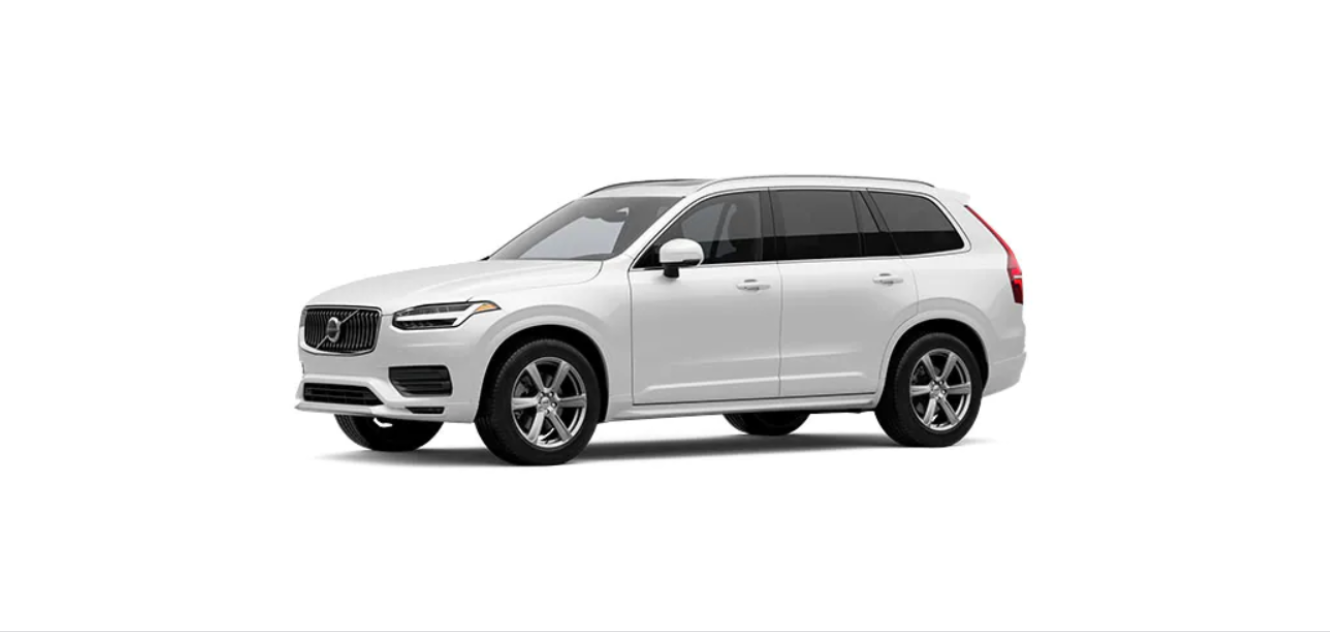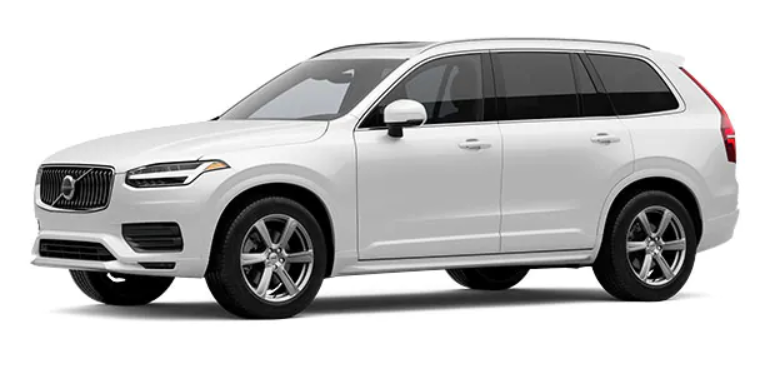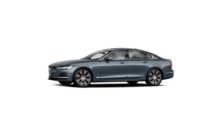- Hybrid battery – The function of the hybrid battery is to store energy. It receives energy when charging from the mains power circuit, during regenerative braking or from the high-voltage generator. It provides energy for electric operation as well as for temporarily operating the electric air conditioning during the preconditioning of the passenger compartment.
- Internal combustion engine – The internal combustion engine starts when the energy level in the hybrid battery is insufficient for the engine power that the driver requests.
- High voltage generator – Charges the hybrid battery. Starter motor for the internal combustion engine. Can support the internal combustion engine with extra electrical energy.
- Electric motor – Powers the car in electric operation. If necessary, provides extra torque and power during acceleration. Provides electrical all-wheel drive functionality. Recycles brake energy to electrical energy.
Battery usage
- When Hold is activated, the charge in the hybrid battery is maintained and can instead be used at a later time, e.g. when driving in city traffic.
- The car works as for normal hybrid operation with discharged battery where, in addition to re-using brake-generated energy, for example, the car starts the internal combustion engine more often in order to maintain the charge in the battery.
When Charge is activated, the hybrid battery is charged using the internal combustion engine in order to obtain increased electric drive at a later time.
Activating Hold or Charge
Activate via the centre display.
- Press
- Select Driving.
Activate the function you require beside Battery usage.
In Hybrid drive mode, with battery usage set to Auto, smart energy distribution can be used by using Google Maps in order to drive the car as energy efficiently as possible for the whole mileage.
Drive modes
Selectable drive modes
- Four drive modes can be selected: Hybrid, Pure, Power and Constant AWD.
The different drive modes are adapted to provide as good driving characteristics as possible in terms of the following:
- steering
- engine/gearbox/all-wheel drive
- brakes
- shock absorption
- driver display
- climate settings.
Do not leave the car in an unventilated area with activated drive mode and the fuel-driven engine switched off – automatic engine start occurs at low energy level in the hybrid battery, and the exhaust gases could then cause serious injury to people and animals.
The driver display indicates the drive mode selected.
Hybrid
- When the car starts, it is in the Hybrid mode. The electric motor and internal combustion engine are used, individually or in parallel, and their use is adapted with regard to performance, fuel consumption and comfort. The capacity to run solely with the electric motor depends on the hybrid battery’s energy level and, for example, the need for heating or cooling in the passenger compartment.
- Volvo recommends that you use the Hybrid mode for day-to-day driving.
Points to remember when driving with the Hybrid mode
- all-wheel drive is engaged automatically when required
- the internal combustion engine is started more often at low State of Charge (SoC) in the hybrid battery. Charge the car or activate Charge under Battery usage in the centre display to run on electricity alone.
- the car can be run on electricity alone at high State of Charge (SoC). The internal combustion engine starts when the energy level in the battery is insufficient for the engine power that the driver requests with the accelerator pedal.
- energy is regenerated back to the hybrid battery during gentle pressure on the brake pedal.
The use of the car’s electric motor is prioritized in the Pure mode. The drive mode is available when the hybrid battery has a sufficiently high charge level. If the battery’s charge level is too low, the car’s characteristics are controlled in order to provide as low energy consumption as possible. Volvo recommends that you use the Pure mode for day-to-day driving.
Points to remember when driving with the Pure mode
- the output of some climate settings is adapted
- in slippery road conditions, slightly more wheel spin may be permitted before the all-wheel drive is engaged
The Pure mode is available when the hybrid battery has a sufficiently high State of Charge (SoC) and power output, which may be affected by temperature. When the internal combustion engine starts, the drive mode automatically changes to the Hybrid mode until the driver has the opportunity to select the Pure mode again.
The internal combustion engine starts:
- if the battery’s State of Charge (SoC) is too low
- if the driver fully depresses the accelerator pedal.
The Pure mode is not available:
- if the battery’s State of Charge (SoC) is too low
- if the speed exceeds 140 km/h (87 mph) (does not apply when driving downhill, etc.)
- in the event of system/component limitations e.g. low outside temperature.
The internal combustion engine may start temporarily in certain driving situations when the Pure drive mode is in use. This is in order to provide the wheels with the desired torque in driving situations that require higher load, e.g. when driving with a trailer or on an uphill gradient.
Remember that the car does not emit any engine noise when it is only powered by the electric motor and may therefore be difficult to notice by children, pedestrians, cyclists and animals. This is especially true at low speeds, such as in car parks.
The Power drive mode adapts the combined power output from the electric motor and internal combustion engine in order to provide as high as possible performance and response to acceleration. The gear changes become faster and more distinct, and the gearbox prioritizes a gear with greater traction. Steering response is faster and shock absorption harder. Volvo recommends that you use the Power mode when you want sportier characteristics and a faster response to acceleration.
Points to remember when driving with the Power mode
- fuel consumption may increase.
Constant AWD
- The Constant AWD drive mode improves the car’s traction with enhanced all-wheel drive. An adapted distribution between the front and rear axle torque provides good traction, stability and road holding.
- Volvo recommends that you use Constant AWD for slippery road conditions, when driving with a heavy trailer, or when towing.
General information on electric drive
- The hybrid battery is charged via a charging cable, but can be charged by gentle braking and engine braking in gear position B. The hybrid battery can also be charged by the car’s engine. The car’s starter battery is charged when the hybrid battery is charging.
- The time it takes for the hybrid battery to be charged is dependent on the amperage that is used.
While driving
- The driver display shows charging information, selected drive mode, distance to empty battery, and the hybrid battery’s charge level (in % only when connected to charging).
- It is possible to set the car in different drive modes while driving, e.g. electric operation only or, when power is required, both electric motor and petrol engine. The car calculates a combination of drivability, driving experience, environmental impact and fuel economy according to the drive mode selected.
Effect of temperature
- The hybrid battery with associated electrical drive systems, as well as the petrol engine and its drive systems, will work better at the correct operating temperature.
- If the hybrid battery’s temperature is below -10 ºC (14 ºF) or above 40 ºC (104 ºF) then it may mean that some of the car’s functions are changed or unavailable because the capacity of the hybrid battery is reduced outside this temperature range.
- Electric operation is not possible if the temperature of the battery is too low or too high.
Important to know
The capacity of the hybrid battery decreases slightly with age and use, which may result in increased use of the petrol engine and thereby slightly increased fuel consumption.
Replacing the hybrid battery must only be performed by a workshop – an authorised Volvo workshop is recommended.
Exterior engine noise
Remember that the car does not emit any engine noise when it is only powered by the electric motor and may therefore be difficult to notice by children, pedestrians, cyclists and animals. This is especially true at low speeds, such as in car parks.
Warning
- Several components in the car work with high-voltage current that could be dangerous in the event of incorrect intervention. These components, and all orange-coloured cables, must only be handled by qualified personnel.
- Do not touch anything that is not clearly described in the owner’s manual.
Symbols and messages relating to hybrid drive in the driver display
| Symbol | Message | Specification |
|---|---|---|
| | Drive to workshop 12 V Battery charging fault Service urgent | Fault in the 12V battery. Contact a workshop to check the battery as soon as possible. |
| | Stop safely 12 V battery critical charging fault | Fault in the 12V battery. Stop the car safely and contact a workshop to have the battery checked as soon as possible. |
| | 12 V battery fuse failure Service required | Fault in the 12V battery. Contact a workshop to check the function as soon as possible. |
| | Stop safely HV battery overheated | The temperature of the hybrid battery seems to be rising abnormally. Stop the car and switch off the engine. Wait at least 5 minutes before continuing to drive. Call a workshop or check from the outside that everything seems normal before continuing to drive. |
| | Reduced performance Max car speed limited | The hybrid battery is not sufficiently charged for driving at high speeds. Charge the battery as soon as possible. |
| | Propulsion system Harsh behaviour at low speed Car ok to use | The hybrid system does not function as intended. Contact a workshop to check the function as soon as possible. |
| | Remove charge cable before start | Shown when the driver tries to start the car and the charging cable is connected to the car. Disconnect the charging cable and close the charging hatch. |
Recommendations for hybrid battery
Long-term parking
- Recommended State Of Charge (SOC) for long-term parking (longer than 3 months) is 25-50%.
Check the state of charge (SoC) in the driver display on a regular basis.
- If the State Of Charge (SOC) is higher – drive the car until it reaches the recommended level.
- If the State Of Charge (SOC) is lower – charge the car to the recommended level.
Low State Of Charge (SOC)
Parking in a hot climate
Avoid exposing the car to extreme temperatures. If there is a risk of temperatures around 55 °C (131 °F) then parking for longer than 24 hours should be completely avoided in order to avoid serious damage to the battery.
Store the car in a cool place and avoid extreme temperatures during long-term storage in order to minimise the risk of battery damage. Select a storage location indoors or in the shade, depending on where the temperature is lowest, particularly in a hot climate.
Range
- The estimated range is shown in the driver display.
- When the car is delivered from the factory, or after a factory reset, the range is based on the certified value. When the car has been driven for a while, the range is based on historical driving patterns.
In addition to historical trip data, there are several different factors that affect the range. The longest range is achieved under extremely favourable conditions when all factors have a positive impact.Examples of factors that affect the range:
- speed
- climate settings
- topography
- preconditioning
- tyres and tyre pressure
- traffic situation
- temperature and weather
- road conditions.
Range based on speed and outside temperature
- 20 °C (68 °F) outside temperature and passenger compartment climate Off.
- 20 °C (68 °F) outside temperature and passenger compartment climate On.
- 35 °C (95 °F) outside temperature and passenger compartment climate On.
- -10 °C (14 °F) outside temperature and passenger compartment climate On.
The diagram shows the approximate ratio between constant speed and range.The graph shows that a lower speed gives a longer range. The outside temperature also affects the range, so that very cold or very hot ambient temperatures result in a shorter range.Lines 1 and 2 show the approximate difference in range affected by the climate functions. Turning off the climate control is more beneficial for range.
Economical driving
Before driving
- Precondition the car before driving if possible using the charging cable connected to the mains power circuit.
- If preconditioning is not possible when it is cold outside, use seat heating and steering wheel heating first of all. Avoid warming up the whole of the interior which takes energy from the hybrid battery.
- Choice of tyres and tyre pressure can affect energy consumption – seek advice on suitable tyres from an authorised Volvo dealer.
- Remove unnecessary items from the car – the greater the load the higher the consumption.
While driving
- Activate drive mode Pure.
- Activate the Hold function at higher speeds during journeys that are longer than the range of the electricity.
- If possible, avoid using the Charge function to charge the hybrid battery.
- Drive at a steady speed and keep a good distance to other vehicles and objects in order to avoid braking.
- The hybrid battery is recharged during braking by braking gently with the brake pedal.
- High-speed results in increased energy consumption since the wind resistance increases with speed.
- In a cold climate, reduce electrical heating of windows, mirrors, seats and steering wheel, if possible.
- Avoid driving with open windows.
- Do not hold the car stationary on a hill with the accelerator pedal. Instead, activate the function for braking when stationary.
- If possible, deactivate the climate control while driving a short distance after preconditioning.
After driving
- If possible, park in an acclimated garage with charging facilities.
Recycling the batteries
Hybrid battery
The hybrid battery must only be replaced by a workshop – an authorised Volvo workshop is recommended.
The capacity of the hybrid battery diminishes with age and use, which may result in increased use of the internal combustion engine and, as a consequence, reduced fuel economy and reduced range during electric operation.
The hybrid battery’s coolant must only be topped up by a workshop – an authorised Volvo workshop is recommended.
Specifications for hybrid battery
- Type: Lithium-ion
- Total amount of energy: 18.8 kWh




